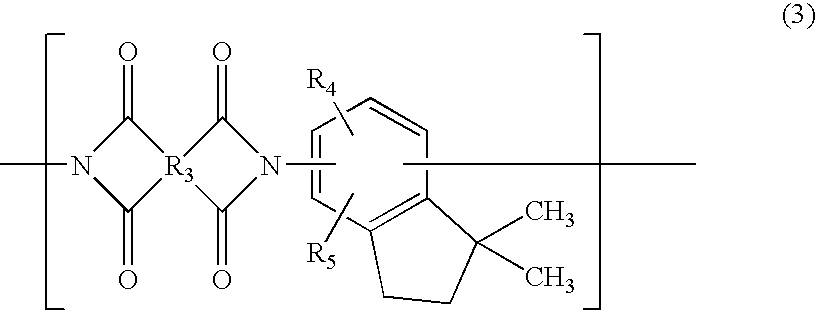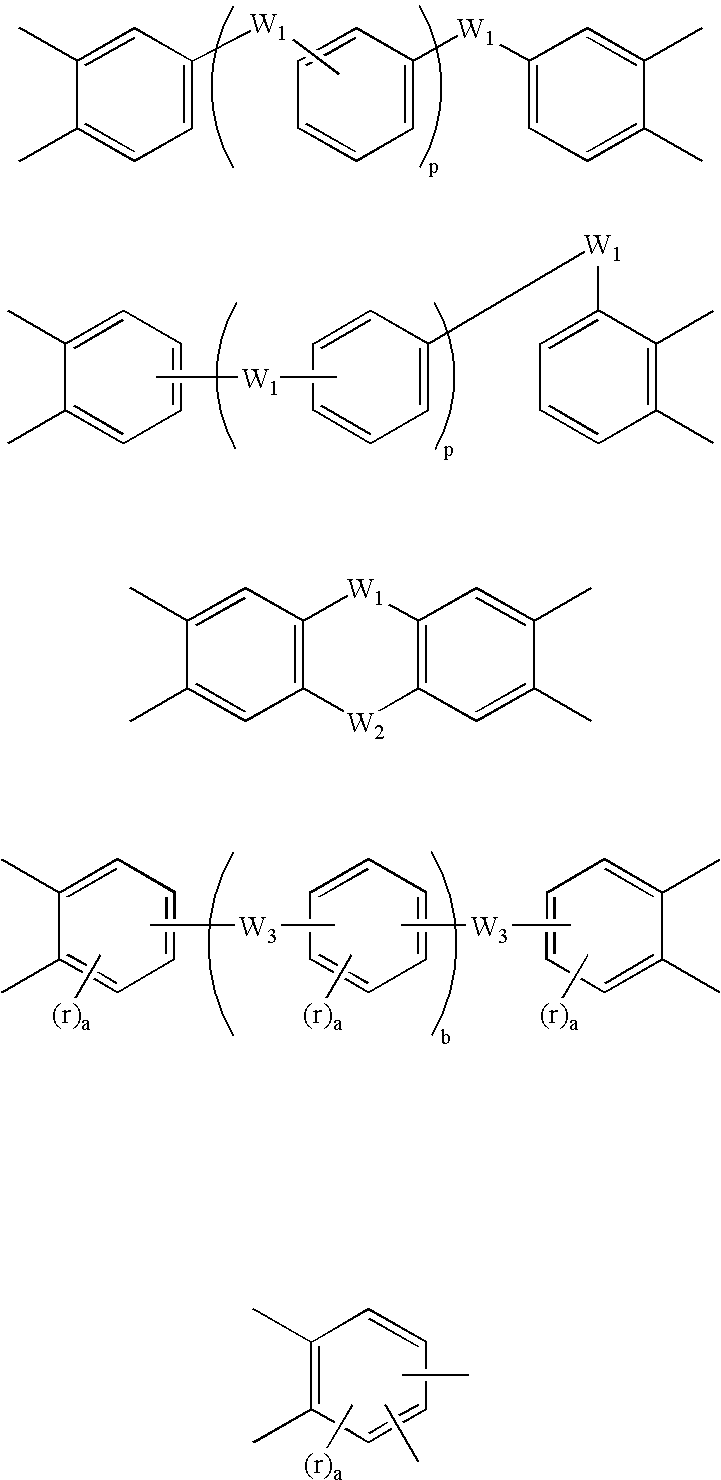Polyimide metal laminate
a technology of polyimide and metal laminate, which is applied in the direction of synthetic resin layered products, transportation and packaging, chemistry apparatus and processes, etc., can solve the problems of wiring deviating, wiring and chip bumps sinking in the thermoplastic polyimide, failure to insert an under film, etc., and achieve excellent modulus of elasticity
- Summary
- Abstract
- Description
- Claims
- Application Information
AI Technical Summary
Benefits of technology
Problems solved by technology
Method used
Image
Examples
synthesis example 1
A vessel equipped with a stirrer and a nitrogen inlet tube was charged with 1532.4 g DMAc as solvent and then with 130.0 g APB, and stirred at room temperature until the sample was dissolved. Thereafter, 322.22 g BTDA was added thereto and stirred at 50 to 60° C. for about 4 hours to give a polyamic acid solution. The content of polyamic acid in the resulting polyamic acid solution was 15% by weight, and the viscosity E at 25° C. was 500 mPa.s.
synthesis example 2
A vessel equipped with a stirrer and a nitrogen inlet tube was charged with 261.0 g DMAc as solvent and then with 20.44 g ODA and 16.12 g m-BP, and the sample was dissolved at 20 to 30° C. under stirring. Thereafter, 30.84 g PMDA was added thereto, and the starting material adhering to the inside of the flask was washed away with 11.0 g DMAc, and the sample was heated at 50 to 60° C. under stirring for about 1 hour, and then 0.44 g PMDA was added thereto and stirred for about 4 hours at a temperature kept at 60° C., to give a varnish (A). Then, another vessel equipped with a stirrer and a nitrogen inlet tube was charged with 263.0 g NMP as solvent and then with 19.62 g PPD, and the sample was dissolved at 20 to 30° C. under stirring. Thereafter, 37.0 g BPDA and 11.06 g PMDA were added thereto, and the starting material adhering to the inside of the flask was washed away with 10.0 g NMP, and the sample was heated at 50 to 60° C. under stirring for about 4 hours, to give a varnish (B...
synthesis example 3
The polyamic acid obtained in Synthesis Example 2 was diluted to 15 wt % with NMP, and 18 g dilution was introduced into a 100-ml reaction vessel, and TMOS (1.245 g) and water (0.631 g) were added thereto, and the mixture was reacted at 60° C. for 1 hour. Then, an amino-containing alkoxysilane ATPMOS (0.138 g) was added thereto and reacted at 60° C. for 5 hours, to give a varnish of the silica-dispersed polyamic acid composition. Before addition, the TMOS, APTMOS and water were diluted to 50 wt % with NMP.
PUM
| Property | Measurement | Unit |
|---|---|---|
| Expansion enthalpy | aaaaa | aaaaa |
Abstract
Description
Claims
Application Information
 Login to View More
Login to View More - R&D
- Intellectual Property
- Life Sciences
- Materials
- Tech Scout
- Unparalleled Data Quality
- Higher Quality Content
- 60% Fewer Hallucinations
Browse by: Latest US Patents, China's latest patents, Technical Efficacy Thesaurus, Application Domain, Technology Topic, Popular Technical Reports.
© 2025 PatSnap. All rights reserved.Legal|Privacy policy|Modern Slavery Act Transparency Statement|Sitemap|About US| Contact US: help@patsnap.com



